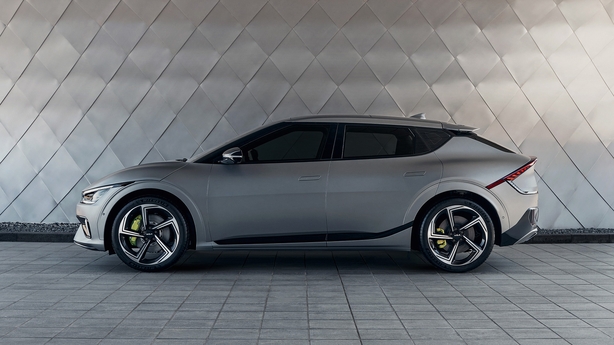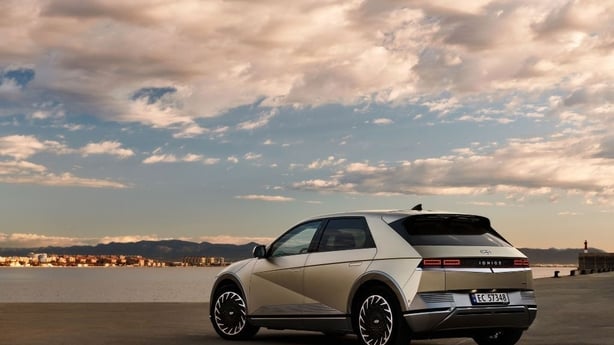Hyundai and Kia have swept up global and European awards for their Ioniq 5 and EV 6, respectively. So which is the better of the two sibling rivals ?
Coming, as they do from the same stable, you'll wonder how different the Kia EV 6 and the Hyundai Ioniq 5 can be, given the sharing of an identical platform and battery technology. The simple answer is by each employing a very different design emphasis. The Kia has been designed with a slightly retro theme, while, the Kia gets a more sporty profile with a particularly sloping rear roofline. That means a slightly tighter interior for passengers. In most other respects they are very closely related indeed and both benefit from flat floors, with the battery laid under the floor and no transmission tunnel to limit space.

In the judging for the recent European Car of the Year the Kia pipped the Hyundai into third place and the difference in points was minimal - the Kia scored 279 and the Hyundai 261. What seemed to tip the balance for Kia seems was the more dynamic feel of the EV 6 compared to Hyundai’s slightly more sedate feedback, and the sportier profile of the Kia.
The two are, however, very comparable in many ways and both are excellent cars. Both come from companies that have surprised the rest of the car industry with their designs in recent years and that can give global names, including Tesla, a real run for their money when it comes to styling and the driver and passenger experience. In fact, the Ioniq 5 has a cabin far superior to any Tesla I’ve driven and the 12.3 " twin screens in it and the Kia EV 6 are near-perfect.

When it comes to performance both have plenty of punch but I’m inclined to think focusing on higher speeds and output rather defeats the purpose of opting for a car like this. People are opting for electric cars to make a statement about their credentials, or those of their companies in many cases.
My own experience of driving cars like these has been one of prioritising energy consumption rather than performance, and apart from the occasional drift into sports mode, I’ve been inclined to seek the reward of squeezing more out of the battery.
It’s enough that electric cars can drain themselves more quickly when driven in cold weather or when extras such as air conditioning and heating, demisters and entertainment systems are being used, without pushing the pedal too enthusiastically to drain the battery even more quickly.
The Ioniq I drove had the smaller - and less popular 58 kWh battery - while the Kia had the bigger 77.4 kWh battery. Kia doesn’t give the option of a small battery, hence its heftier price, while most Hyundai customers are option for the bigger battery Ioniq, bringing the price of both broadly into line.
The EV 6 version I drove was the GT one, which has a tuning more appropriate to the GT heritage and feels lower to the ground. Steering is also more positive than with the Ioniq. However, the Ioniq is a different experience and I preferred it. It feels more tuned for overall comfort and there’s a nicer balance of comfort and aesthetics.

It has what has been described as a luxury lounge feel and when you step into it you feel an airy and luxurious calm. The 12.3 " twin screens feature all your functional and entertainment requirements. It’s a bit more like a home cinema experience than a motoring one, such is the digital clarity and logical layout. The Kia has similar screens with the same functionality.
Hyundai’s maximising of internal space and design integration gives it the edge over the Kia. The interior design and the high seating position led to a calming experience, whether on the open road or in the city. There is also an abundance of light and airiness with the Ioniq, whereas the Kia is aiming for that cockpit experience.
Both cars use similar sized batteries and compare well with the best of the current volume crop in terms of predictable range.
However, like all electric cars factors such as colder weather and motorway speeds bring down the claimed range of both batteries (between about 380 km for the smaller battery and about 420 km for the bigger one) by about 25 per cent. So you’ll still likely need a charge on a longer journey.
Kia and Hyundai both have heat pumps that reduce the drag heating and air conditioning place on the battery, which is a help. Also, paddles beside the steering wheel enable better harvesting of regenerated electricity.
I have to admit that I didn’t let the battery go below an 80 km range on either car, being perhaps overly cautious about not being able to make a charging point on time, so it’s difficult to get an exact range. The Kia with the bigger battery comfortably got to about 280 km, plus the available 80 km, while the Hyundai got to about 180, plus the 80 on reserve. Cold weather was a factor during both test drives. So, 260 kilometres as against 360, approximately.
Interestingly, I noted recent remarks by the head of the British motor industry’s CEO saying drivers were getting over range anxiety but were now faced with "charge anxiety". I think that’s something that applies here too. We need more fast chargers - lots of them - and quick.
Both companies say their batteries can be charged from 10% to 80% in about eighteen minutes but this is based on the fastest charger being available - and that will require the highest possible charger - something not always easily available at charging points.
Like all other electric cars, you will require a home charger because relying on public networks at the moment can be a bit of a white-knuckle experience.
And for the benefit of those who have spotted smaller charging installations at places like public car parks and supermarkets but haven’t really investigated them, they should be aware that most of those installations would take perhaps eight hours to get you car from near empty to near full.
Both cars are big and heavy. The Ioniq comes in at about two tonnes and the Kia about the same. The Hyundai has the better boot but both are generous for kit such as golf clubs and so on.
Prices for the Ioniq 5 start at €38,995 and you can add about another €10,000 for the bigger battery version. The Kia starts at €50,000 and the GT versions costs €54,345. This is where the Ioniq wins out for me. Its pricing is more competitive and I, for one, would be happier with the entry level model - just as long as I can fall back on a home charger - even with a more limited range. Most Hyundai customers are opting for the bigger battery version, which comes in at €49,995 - a fiver less than Kia’s entry level version with the same bigger battery. The question is whether they actually need the bigger battery in the first place.
I suspect many people who do high mileage are still very reserved when it comes to opting to switch to electric, preferring to avoid any perceived range - or indeed charging - anxiety, at least until they are happy with the extent and availability of a fast charging network.
However, there are many whose mileage is average and for them the Hyundai option of a smaller battery makes a good deal of sense and involves a significant saving.
It may well be a matter of personal taste as to which of these cars one might opt for and, at the moment, it may be academic. Both companies are handicapped by severe supply shortages right now.
They are both really innovative and technically advanced, by a long stretch in terms of their on-board safety features and display screens. They have also benefitted from some really creative design work that brings real imagination into the EV world and has made some competitors realise just how far they have to go to catch up.
The European and World Car titles both have been given, respectively, speak for themselves.


